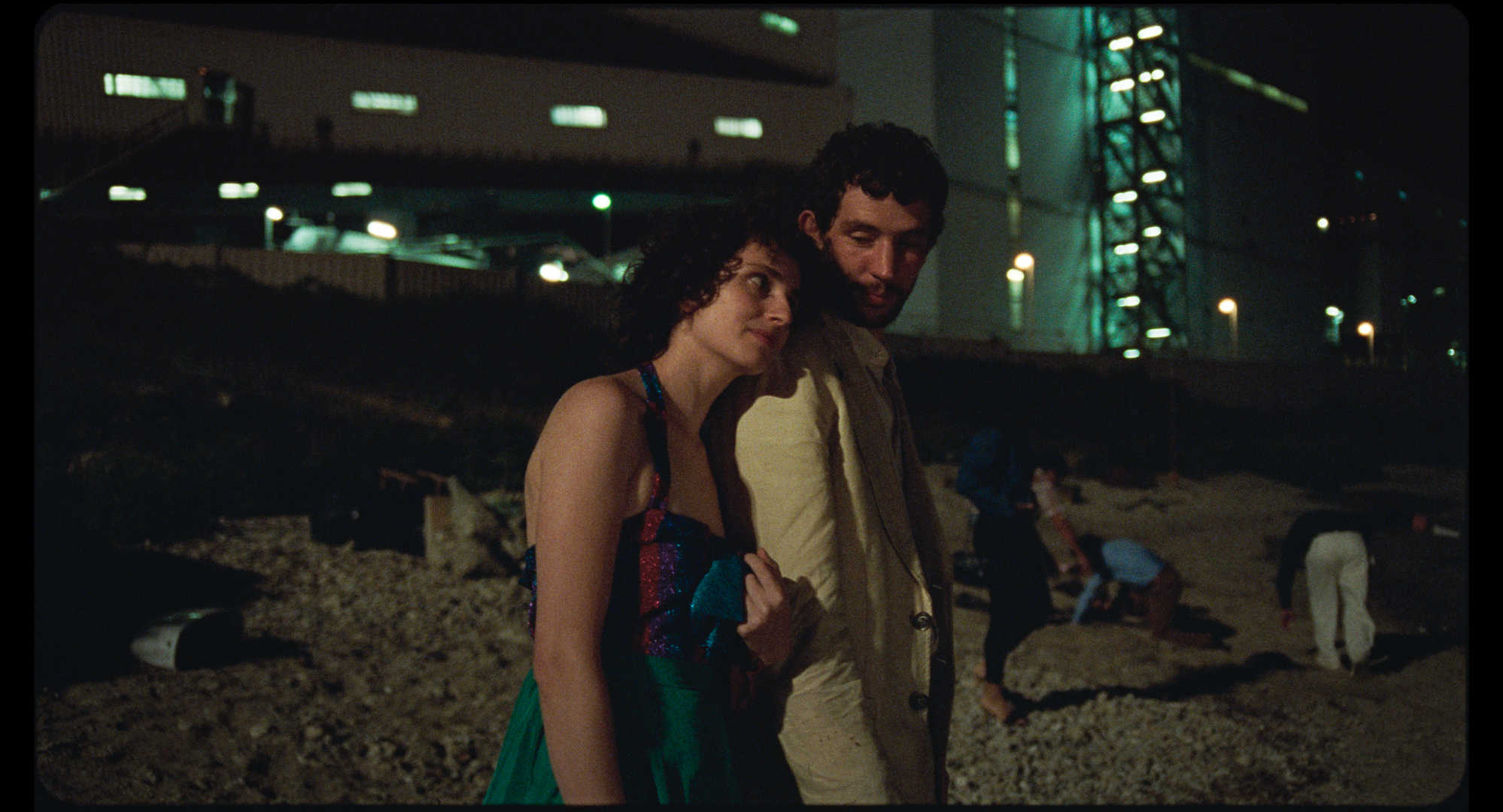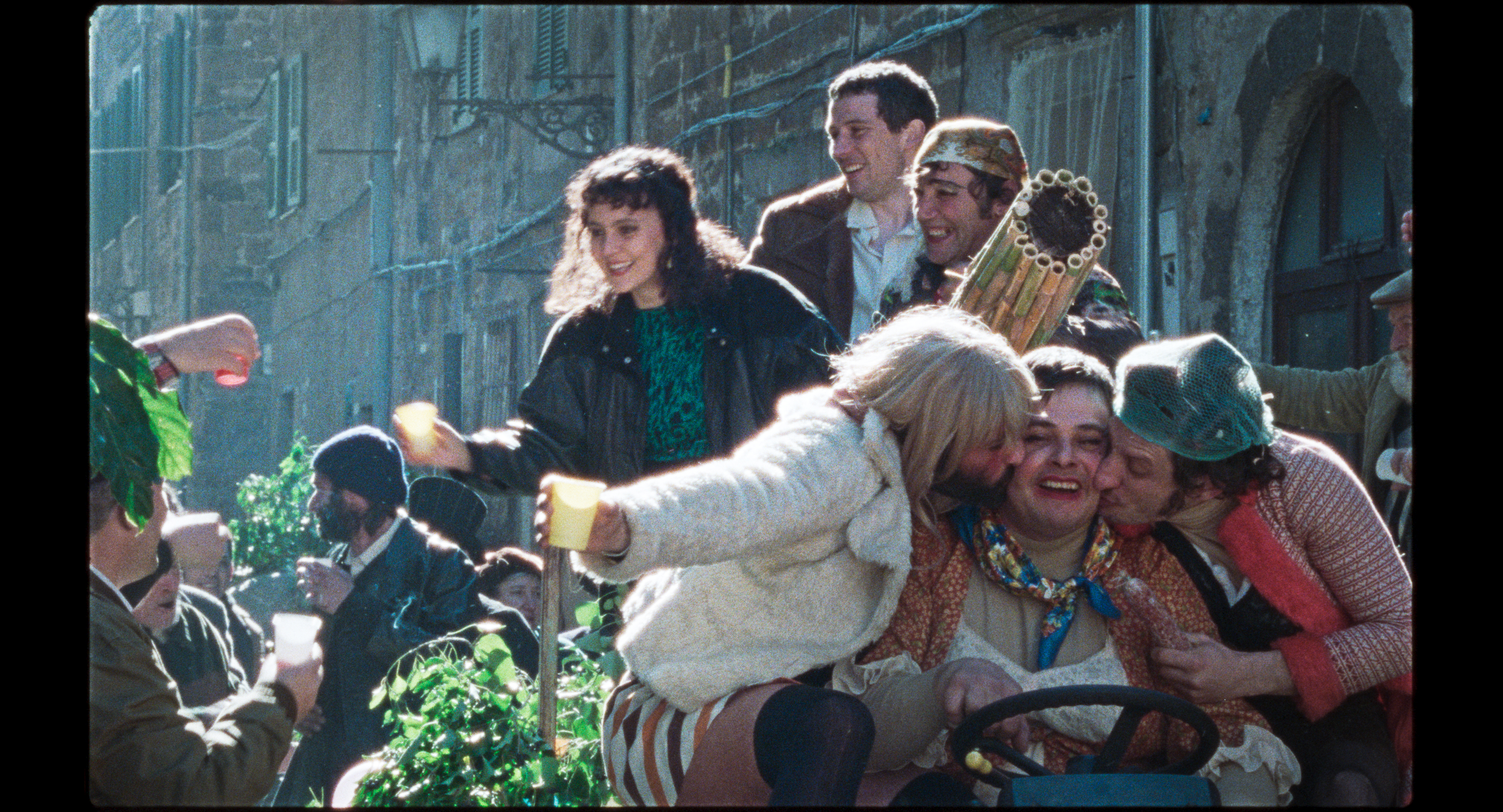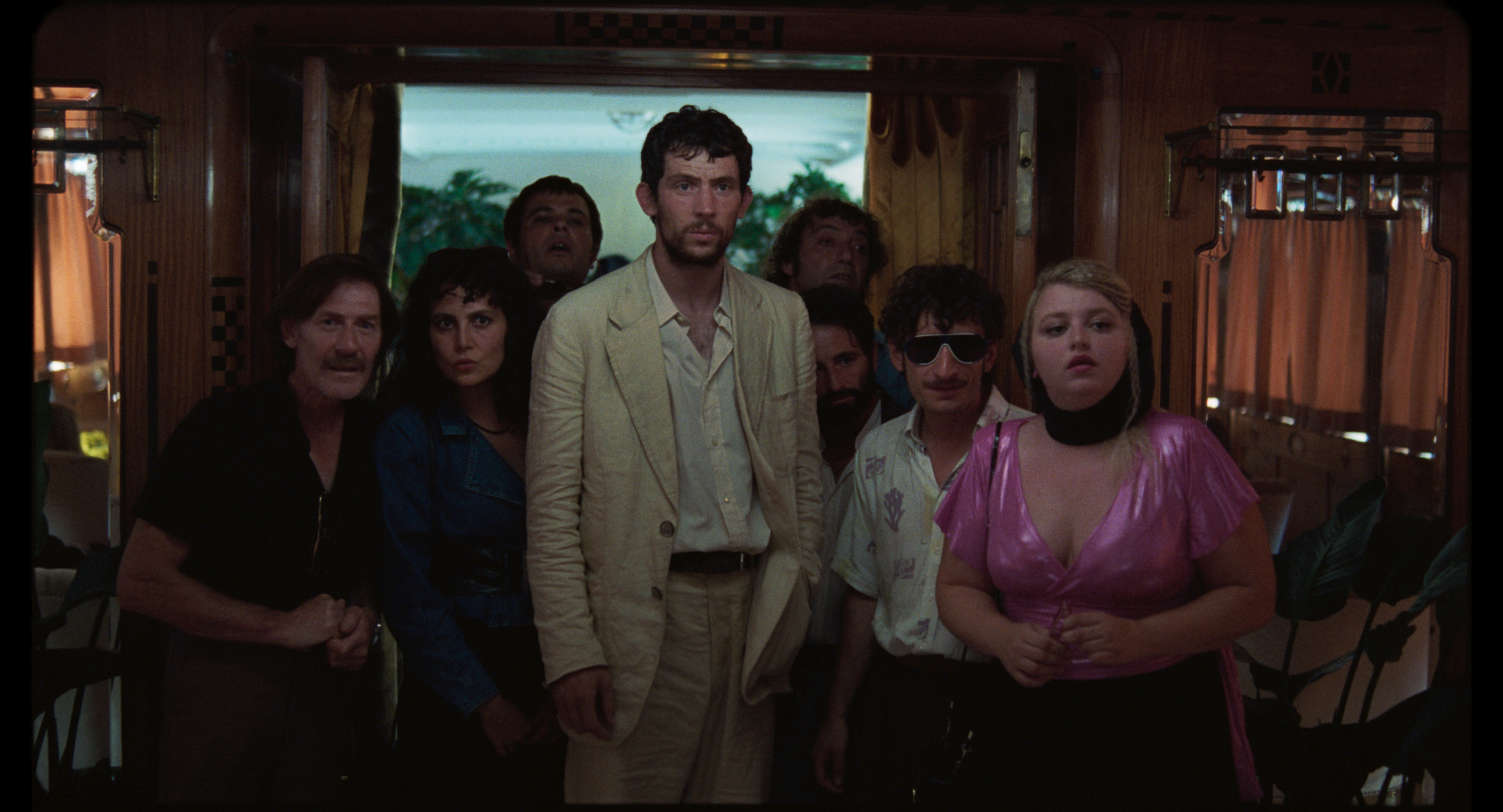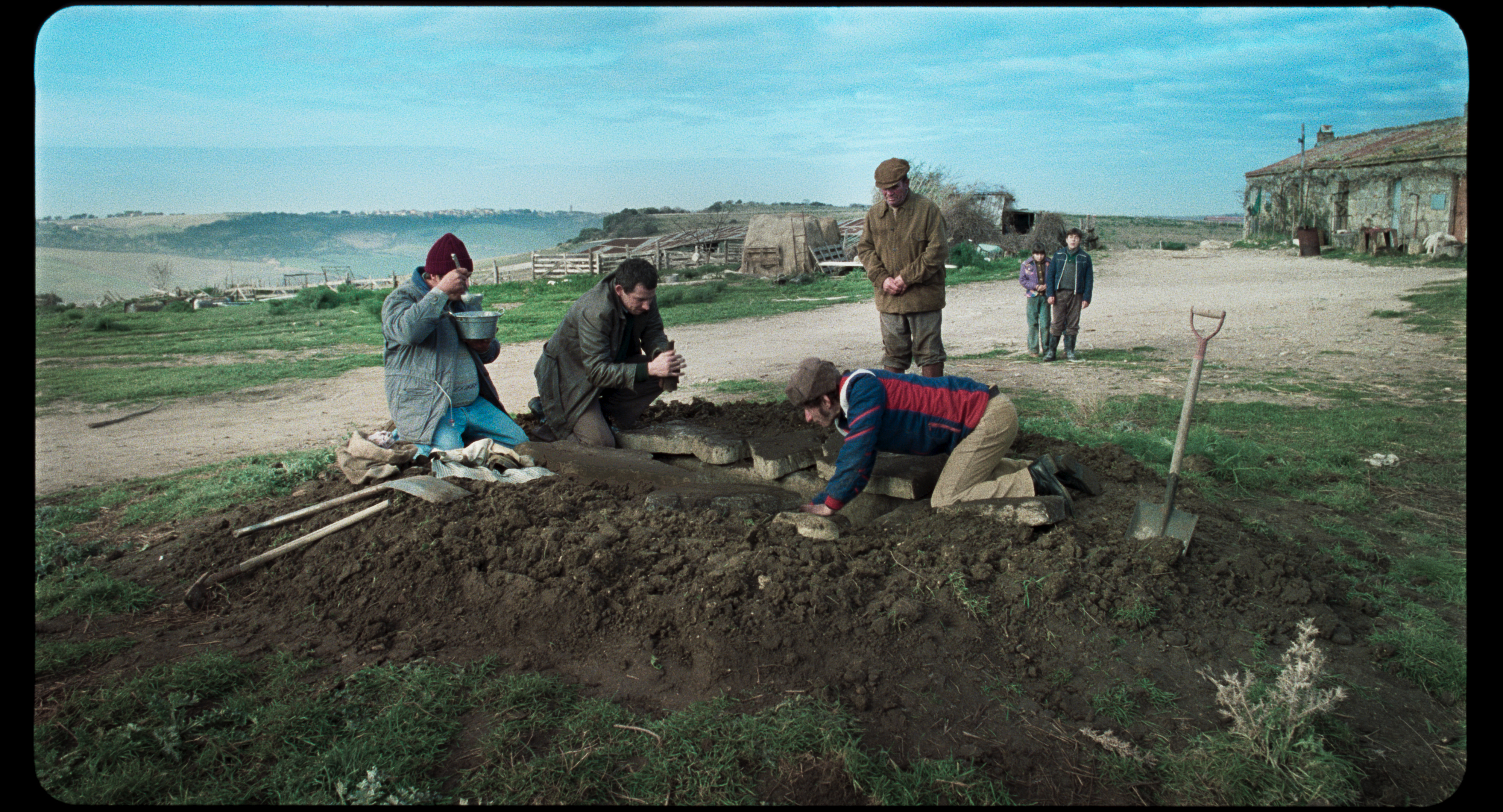SYNOPSIS
Everyone has their own Chimera, something they try to achieve but never manage to find. For the band of tombaroli, thieves of ancient grave goods and archaeological wonders, the Chimera means redemption from work and the dream of easy wealth. For Arthur, the Chimera looks like the woman he lost, Beniamina. To find her, Arthur challenges the invisible, searches everywhere, goes inside the earth – in search of the door to the afterlife of which myths speak. In an adventurous journey between the living and the dead, between forests and cities, between celebrations and solitudes, the intertwined destinies of these characters unfold, all in search of the Chimera.
Written and directed by
ALICE ROHRWACHER
Produced by
TEMPESTA con RAI CINEMA
In co-production with
AD VITAM PRODUCTION e AMKA FILMS PRODUCTIONS
In co-production with
RSI RADIOTELEVISIONE SVIZZZERA SRG SSR e ARTE FRANCE CINÉMA
With the participation of
ARTE FRANCE, CANAL +, CINÉ +
In association with
TRT-SINEMA
With the support of
MIC - MINISTERO DELLA CULTURA DIREZIONE GENERALE CINEMA E AUDIOVISIVO
With the support of
UFFICIO FEDERALE DELLA CULTURA
Realized with the support of
AIDE AUX CINEMAS DU MONDE – CENTRE NATIONAL DU CINEMA ET DE L’IMAGE ANIMEE – INSTITUT FRANÇAIS
World premiere
FESTIVAL DE CANNES 2023
Duration
134'
DIRECTOR'S NOTES
an underground world
Where I grew up it was common to hear stories of secret finds, clandestine digs and mysterious adventures. You only had to stay at the bar until late at night or stop at a country inn to hear about so-and-so who’d uncovered a Villanovan tomb with his tractor, or someone else who, digging by the necropolis one night, had discovered a gold necklace so long it could go all the way round a house. Or someone else still who’d got rich in Switzerland with the sale of an Etruscan vase he’d found in his garden.
stories of skeletons and ghosts, of getaways and darkness.
Life around me was made up of different parts: one solar and contemporary and busy, another nocturnal and mysterious and secret. There were many layers and we all experienced them: you only had to dig up a few centimetres of soil and the fragment of an artefact made by someone else’s hands would appear among the pebbles. What era was it looking at me from? You only had to go into the barns and wine cellars round about to realise that they had once been something else: Etruscan tombs, maybe, or shelters from bygone ages, or holy sites. The proximity of sacred and profane, of death and life, that characterised the years in which I was growing up has always fascinated me and given a measure to my way of seeing. This is why I decided at last to make a film that tells this layered story, this relationship between two worlds, the last part in a triptych about a local area whose attention is focused on one central question: what should it do with its past? As some grave-robbers say, down our way it’s the dead that give life.
poor grave-robbers
The Chimera is the story of the ups and downs of a gang of tombaroli, or grave-robbers, violators of Etruscan tombs and peddlers of antiques to local fences. It is set in the 1980s when anyone who decided to become a tombarolo – crossing the tacit dividing line between the sacred and the violable – did so to turn the past around, to become new, something else. The tombaroli were, unquestionably, strong, youthful – and damned.
They didn’t belong to the past and they weren’t the sons of their fathers, men who had grown up beside those ancient tombs without ever violating them. They were the sons of themselves. The world belonged to them: they could enter what were regarded as taboo places, smash vases and steal votive offerings, and sell them on. They considered them as nothing but museum pieces, old junk. No longer sacred objects.
The naivety of the people who had buried the stuff made them laugh.
Indeed, they wondered how it was actually possible for a people to leave all that wealth underground for souls… But never mind souls – they wanted to enjoy the gold themselves, and how!
The Etruscans dedicated their art, their craftsmanship and their resources to the invisible.
For the grave-robbers, the invisible simply didn’t exist.
art dealers or cogs in a wheel?
According to the cantastorie, or ballad-singer, we meet in the film, “The tombarolo is a drop in the ocean”. And it happens to be true.
The Chimera addresses one of the broadest questions to affect Italy and the many other countries that are cradles of ancient civilisations in the 20th century – especially since the war. Namely the ancient art market and the illicit trading of archaeological treasures in particular.
This traffic caught on in Etruria in particular, laying down roots among members of a young generation driven by an urge to avenge a series of social wrongs. They wanted to earn money a different way, without working for bosses. They felt they were virtually entitled to the finds, simply because they belonged to the area. It’s likely that this unwritten right derived from the memory of large privately funded archaeological enterprises – such as the digs promoted by Lucien Bonaparte and the King of Sweden – that had left their mark on the inhabitants of Etruria.
Local grave-robbers were proud to go around destroying ancient archaeological sites and tombs. But they were actually mere “cogs in the wheel”, pawns and victims of a system that was much larger than they were. They thought they had the power to decide, but they were really acting in the interest of an art market that, at least in the 1980s and 1990s, was totally removed from the local area.
It was a traffic whose turnover was higher than that of the drugs market in Italy and for decades, insofar as it entailed fewer risks, represented a much better business proposition. Any legal proceedings were perfunctory and, far from being summary, trials were, as the tombaroli liked to joke, grindingly slow.
In short, these predators were in actual fact the prey of the vaster art market that incorporated them. And Spartaco, the ambiguous fence with his/her golden yellow boat suspended on the lake, is one of its symbols.
Arthur, the foreigner
The main character in The Chimera is Arthur, the foreigner. He lives not inside or outside the town walls, but on them. He comes from a country that is never established exactly: it could be England, it could be Ireland … But maybe it doesn’t really matter, maybe it’s Arthur himself who doesn’t want to reveal it. The gang may leave him out of their everyday comings and goings, but it’s he they have chosen as their leader and their chief. Arthur is someone who is talked about a lot.
Arthur is different from all the others because he belongs neither to the local area nor to the gang. What he is searching for is not profit and money and adventure but something else, something hard to share. But he does enjoy hanging out with the gang and is fascinated by the town, with its festas and lights and fireworks. Not to mention a sense of community that he has never had before. His is a fascination that has a long history, dating from the times of the Grand Tour when Italy cast a spell on the many young North Europeans like himself who used to travel here. But none of this is enough for him.
Just as Orpheus goes in search of Eurydice, so Arthur senses that by digging he can find something he has lost, as if through the famous and much celebrated “gate to the afterlife””. In the afterlife is Beniamina, the woman he lost years earlier, his “root”. On his journey, Arthur is accompanied by two women: on the one hand Beniamina, who is no longer with him but attracts him like a magnet, on the other Italia, cheerful and lively, superstitious and comical, a woman Arthur could love … if only he would let the past go.
Damnation or salvation? Ecstasy or a lie?
visually
We worked with three formats of photographic film: 35 mm, which lends itself to frescoes, to iconography, to large-scale illustrations in books of fairy tales; Super16 mm, with its matchless capacity for storytelling and synthesis, which, as if by magic, takes us straight to the heart of the action; and 16mm, stolen from a small amateur film camera, whose effect is reminiscent of notes pencilled into the margins of a book.
In The Chimera I’ve attempted to weave very disparate threads, as if in an oriental tapestry. I have tried to play with the subject-matter of the film, slowing down, accelerating, singing, proclaiming, listening. And observing birds in flight, which for the Etruscans represent our destiny.
What is most important is – as in a kaleidoscope – to find in the story of one man the story of men, and to gather together round a film to ask ourselves just how unlucky and comical, how moving and violent, humanity really is.
CAST
Arthur JOSH O’ CONNOR
Italia CAROL DUARTE
Flora ISABELLA ROSSELLINI
Spartaco ALBA ROHRWACHER
Melodie LOU ROY LECOLLINET
Jerry GIULIANO MANTOVANI
Mario GIAN PIERO CAPRETTO
Melchiorre MELCHIORRE PALA
Fabiana RAMONA FIORINI
Il portuale LUCA GARGIULLO
Beniamina YILE VIANELLO
NELLA BARBARA CHIESA
VERA ELISABETTA PEROTTO
Rossa CHIARA PAZZAGLIA
Sista FRANCESCA CARRAIN
Crew
Writer and director ALICE ROHRWACHER
DOP HÉLÈNE LOUVART
Editing NELLY QUETTIER
Set design EMITA FRIGATO
Costumes LOREDANA BUSCEMI
Sound design XAVIER LAVOREL
Hair styling DANIELA TARTARI
Make up ESMÉ SCIARONI
Casting director CHIARA POLIZZI
Acting coach TATIANA LEPORE
Line producer GIORGIO GASPARINI
International casting FIONA WEIR
Production manager ALESSANDRO STELLA
Boom operator JULIEN D’ESPOSITO
Sound mix MARTA BILLINGSLEY
Mix engineer MAXENCE CIEKAWY
Assistant director NICOLA SCORZA
Artistic assistant director TIZIANA POLI
Script supervisor SARA CAVANI




